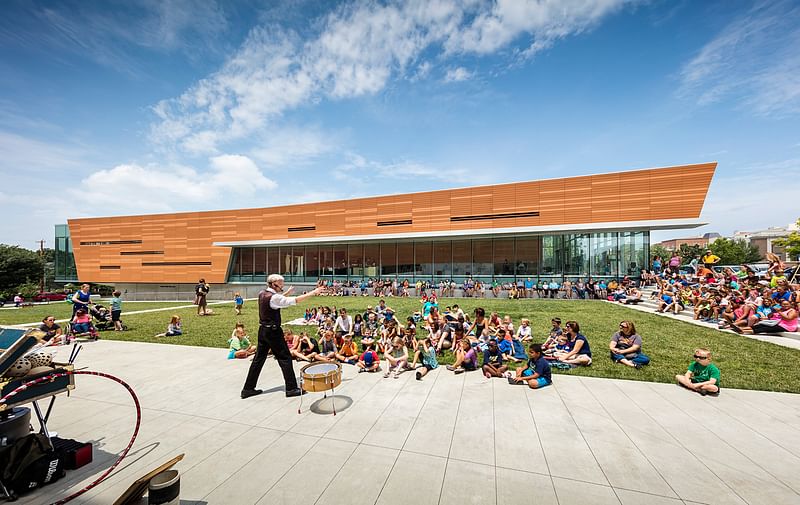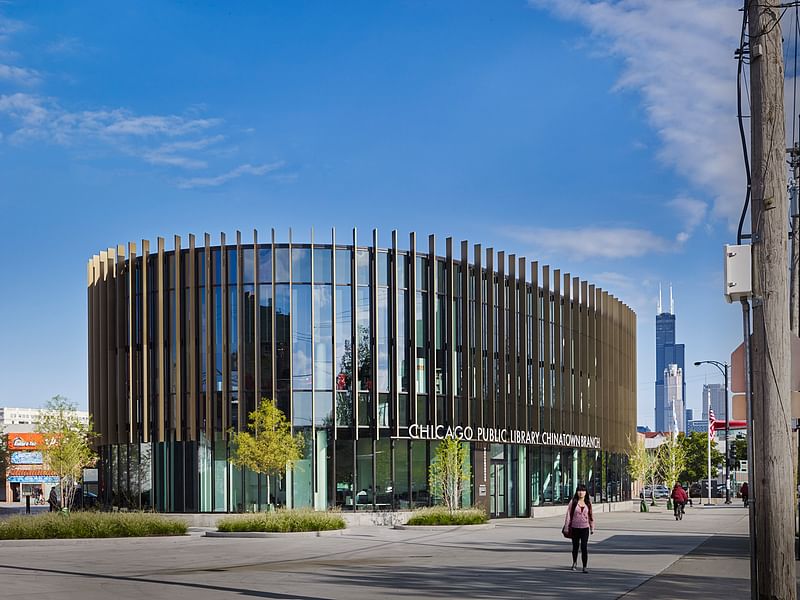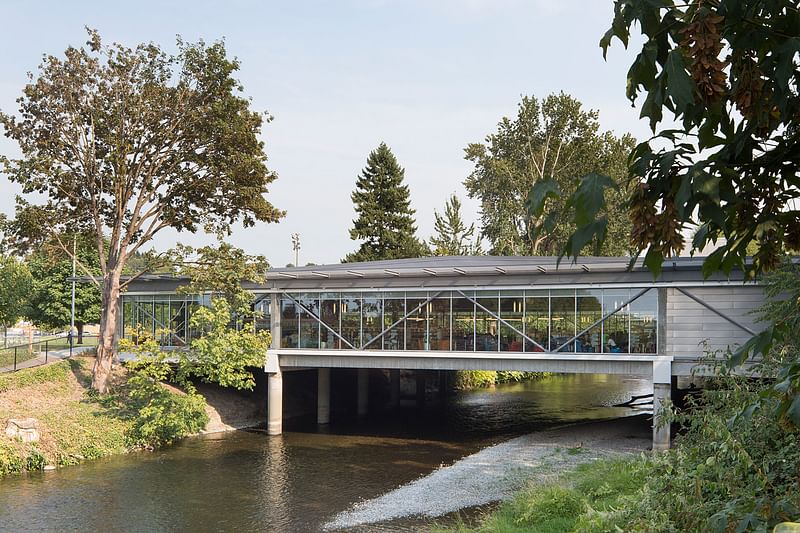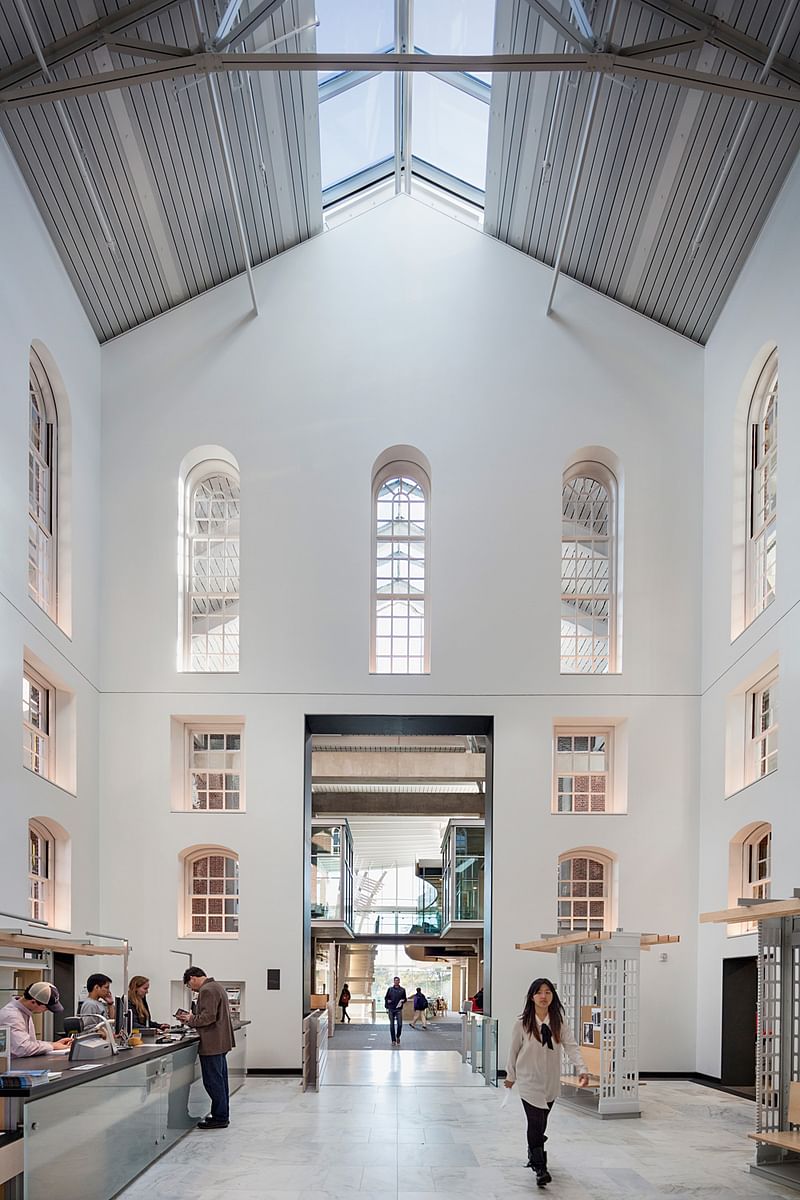Get a peek of the 2016 AIA/ALA Library Building Awards winners
By Justine Testado|
Thursday, Apr 14, 2016

Related
Books aside, the joy of stepping foot inside a brick-and-mortar library is experiencing the building's design itself, and visiting a neighborhood's public library can also offer a glimpse of the local community that uses it. In this spirit, the AIA and the American Library Association (ALA) recognize some of North America's top-notch library design in the annual AIA Library Building Awards.
This year's seven winners are located in the northern parts of the continent, from Washington state to Toronto.
Keep reading for more about the winning projects.
(cover image) Billings Public Library in Billings, Montana | will bruder+PARTNERS ltd with O2 Architects
Project description: “As the only public library serving Montana’s largest metropolitan area, Billings Public Library stands in the urban heart of the community. The 66,000-square-foot library draws from the geologic uniqueness of the surrounding landscape while creating a radiant atmosphere full of natural light. Day or night, the subtle transparency and glow of the grand reading room casts the library as a warm and inviting pavilion of public purpose to anchor to the northern edge of downtown Billings. Designed with community input the library carries sunlight and shadow with unexpected reflections and connects visually to the horizon. The library is a touchstone of sustainable design practices with its LEED Platinum Certification.”
Hennepin County Walker Library in Minneapolis | VJAA

Project description: “The new library replaces an outmoded subterranean library, reestablishing the street facade that gives Hennepin Avenue its distinctive character. The new stainless steel and glass clad building is a simple figural mass with a civic character. Its form echoes the typical low-rise facades in the neighborhood with simple masses hovering over street level glass. Facades are subtly deformed to respond to the surrounding context: the upper volume is folded to inflect toward the marquee of the iconic 1930’s Uptown Theater and the glass wall at the base is angled back from the street to acknowledge the constant flow of pedestrians, bicycles, and automobiles. Rooftop light monitors add an informal quality while animating the interior.”
Lawrence Public Library Renovation and Expansion in Lawrence, KS | Gould Evans

Project description: “The renovation and expansion of this 1970s concrete library has transformed it into a 21st century civic place: from book repository to multimedia community hub. The design solution wrapped all sides of the existing library with a continuous reading room, emphasizing places of spontaneous gathering, reflection and learning. The addition also provides a high-performance thermal envelope engineered to harvest daylight and reduce energy usage. Openings at each corner reveal unique public amenities, including cubbies for children, teen gaming zones, meeting spaces and a coffee bar. Within a few months of reopening, user visits increased 55%, with youth program attendance up 160%.”
Chicago Public Library, Chinatown Branch in Chicago | Skidmore, Owings & Merrill LLP

Project description: “The Chicago Public Library, Chinatown Branch serves as a new civic, educational, and social hub for Chicago’s Chinatown neighborhood, providing a public space geared toward community activities and technology-based learning. Referencing Feng Shui design principles that resonate with the values held by the community, the library emphasizes flexibility and utility. The building is designed to achieve LEED® Gold certification and includes a solar shading screen within the building’s glass curtain wall, a feature that reduces energy consumption by 30 percent compared to a typical library. Adjacent to the “L” and positioned between North and South Chinatown, the library unites the surrounding neighborhoods and enhances the vibrancy and resiliency of the diverse community it serves.”
Renton Public Library in Renton, WA | The Miller Hull Partnership

Project description: “The original 1966 library structure was constructed to straddle the Cedar River and utilized pre-cast concrete but was not compliant with current energy codes and failing structurally. In addition, its building systems were not able to keep up with the increased demands of a 21st century library—heavy in power and data usage. New cross bracing and raw aluminum siding was detailed to celebrate a structurally expressive and finely crafted exterior expression. The renovation maintained the original super structure, but introduced a new energy efficient exterior envelope with floor to ceiling views to the nearby river. Power/data distribution—vital for modern library functionality—was problematic to expand in a concrete precast structure. The team designed overhead power drops using aircraft cable and steel connections to deliver power to study tables and computer stations.”
Ryerson University Student Learning Centre in Toronto | Snøhetta

Project description: “The Ryerson University Student Learning Centre is a new campus landmark and a library expansion that bridges seamlessly to the Ryerson Library and Archives. The collaborative learning spaces provides critically-needed space for students and better connects the campus to the vibrant cityscape surrounding it. Inspired by the historical gathering spaces of the Stoas and Agoras in ancient Greece where learning was inherently social, the lively SLC gives students eight uniquely-designed floors of generous space to meet, study, and exchange ideas. The design develops natural conditions for groups of people to interact while also offering areas for controlled and introspective study. Most importantly, it encourages students to make the space their own. Since its opening in March 2015, the new campus landmark has become a popular hub filled with student activity.”
Sawyer Library in Williamstown, MA | Bohlin Cywinski Jackson

Project description: “The new library complex at Williams College unites the main library with the renowned Chapin Library of Rare Books and the Center for Educational Technology. Filled with abundant community space, group workrooms, classrooms, teleconferencing and a study center, the library is a multifunctional destination for individual and collaborative scholarship. The library’s primary facade is the iconic 1921 Stetson Hall, which has been meticulously restored. The bright white finish of the materials complement the natural light within the main spaces of the building. Cascading along a natural slope towards sweeping views of the Berkshire Mountains, the library spaces look outward while also drawing from the atrium’s social energy that unifies the building’s diverse venues.”


Share
0 Comments
Comment as :